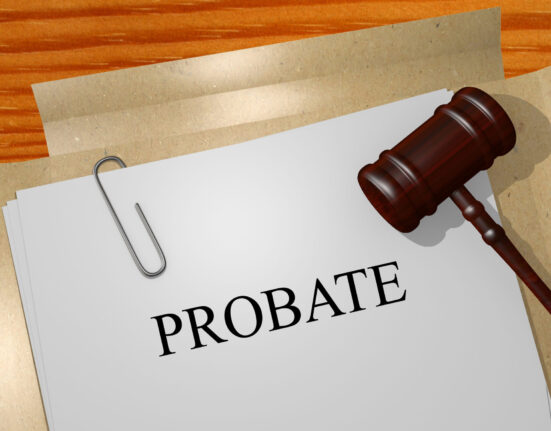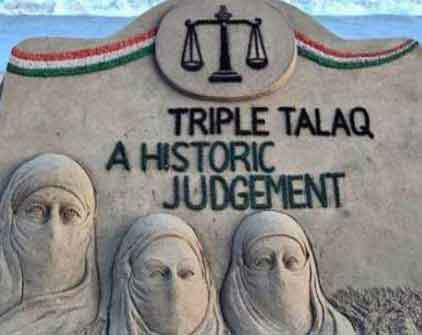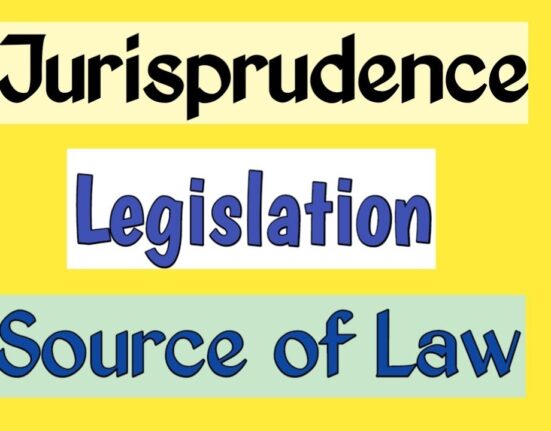Neha Jain, a 2nd-Year student, from Lala Lajpatrai College of Law, Mumbai University, has written this Article ”ADOPTION UNDER HINDU LAW”
INTRODUCTION
Adoption under Hindu Law, is an age-old practice rooted in the desire to expand families and provide care for children in need, has evolved significantly over time. Various legal systems have shaped and redefined the concept of adoption to meet changing societal dynamics and values. In ancient Hindu law, adoption carried profound significance, primarily centred around ensuring male lineage continuity and performing family duties. As societies progressed, the modern concept of adoption emerged, emphasizing the legal rights and status of the adopted child.
With the shift from traditional to modern society, the concept of adoption underwent a transformative change. Reforms in Hindu law were introduced, culminating in the Hindu Adoptions and Maintenance Act (HAMA) of 1956. This codified law sought to harmonize traditional practices with contemporary legal principles. According to HAMA, any person qualifying as a ‘Hindu’ can be eligible to adopt a child. This inclusive approach paved the way for adoption by female Hindus and made girl children eligible for adoption, breaking away from the male-centric tradition.
Adopting a child implies willingly taking them into one’s family and treating them as one’s own. In Hindu law, specific provisions concerning adoption have been outlined, while other personal laws such as Muslim, Christian, and Parsi laws lack separate regulations. Those following these personal laws have recourse to the Guardians and Wards Act, 1890, to legally adopt children.
WHAT IS ADOPTION
The concept of adoption was introduced with the noble intention of providing a rightful family to orphaned, abandoned, and surrendered children. Its primary objective was to ensure the continuation of lineage and the performance of funeral rites. The very essence of adoption was to restore family life to children deprived of their biological families, offering them care, love, and a sense of belonging.
In the context of Hindu couples adopting, the Hindu Adoption and Maintenance Act, 1956, provides the legal framework. This act expanded the definition of ‘adoption’ by using the term ‘child’ instead of ‘son,’ making it inclusive of both girls and boys. It encompasses not only those who follow Hinduism but also Buddhists, Jains, Sikhs, Virashaiva, Lingayat, or members Arya Samaj. This law covers individuals of various faiths residing in India, excluding Christians, Muslims, Parsis, and Jews. According to the Hindu Adoption and Maintenance Act, 1956 Hindu married couples or unmarried adults can only adopt a Hindu child.
ESSENTIALS OF VALID ADOPTION UNDER HINDU LAW
According to Section 6 of the Hindu Adoption and Maintenance Act 1956, the requisites of a valid adoption is as follows:
- the person adopting has the capacity and also the right to take in adoption;
- the person giving in adoption has the capacity to do so;
- the person adopted is capable of being taken in adoption and;
the adoption made in compliance with the other conditions mentioned in the Act.
Other essentials of a valid adoption
- if the adoption is by a male and the person to be adopted is a female, the adoptive father is at least twenty-one years older than the person to be adopted;
- if the adoption is by a female and the person to be adopted is a male, the adoptive mother is at least twenty-one years older than the person to be adopted;
- the same child may not be adopted simultaneously by two or more persons;
- the child to be adopted must be actually given and taken in adoption by the parents or guardian concerned or under their authority with intent to transfer the child from the family of its birth or
- in the case of an abandoned child or a child whose parentage is not known, from the place or family where it has been brought up to the family of its adoption.
WHO CAN BE ADOPTED
According to Section 10 of the Hindu Adoption and Maintenance Act 1956, any child (son or daughter) can be adopted by the following conditions:
- The child should be Hindu.
- The child has not been adopted before.
- The child should not be married.
- The age of the child must be below 15 years.
According to Section 11 of the Act, if a son or daughter is adopted the adoptive father or mother must not have a living son, son’s son, son’s son’s son (either by legitimate blood relationship or by adoption) living at the time of adoption, in the case of son and in the case of daughter there must not have a living daughter or son’s daughter (either by legitimate blood relationship or by adoption) living at the time of adoption.
ADOPTION BY MAN
Section 7 of the Hindu Adoption and Maintenance Act, 1956, plays a pivotal role in establishing the legal framework for adoption within the Hindu community. This section outlines the criteria for eligibility, consent, and the validity of adoption by a Hindu male.
Eligibility for Adoption
According to Section 7 of the Hindu Adoption and Maintenance Act, 1956, any Hindu male who is of sound mind and has attained the age of majority is eligible to adopt a child. This provision recognizes that adoption is a significant decision that should be undertaken by individuals who possess the capacity to make informed choices and provide a suitable environment for the adopted child.
Consent of the Wife
The Act acknowledges the importance of marital partnership by stipulating that if the adopting male is married, the free consent of his wife is necessary for the adoption to be valid. This emphasizes the collaborative nature of adoption decisions within a family context. The consent of the wife serves as an assurance that both spouses are in agreement and committed to bringing a new member into the family through adoption.
Exceptions to Consent
However, there are exceptions to the requirement of the wife’s consent. If the wife has renounced her worldly life or has ceased to be a Hindu, her consent is not necessary for the adoption. Additionally, if a court of competent jurisdiction has declared the wife to be of unsound mind, her consent is not required. These exceptions recognize situations where the wife’s participation might be hindered due to specific circumstances.
Validity of Adoption
An adoption conducted during the wife’s pregnancy remains valid and unaffected by the subsequent birth of a male or female child. This provision ensures that the adoption process is not hindered or nullified by subsequent biological events within the family. Both the biological child and the adopted child are entitled to equal rights over property, establishing a sense of equality and fairness.
ADOPTION BY WOMAN
Section 8 of the Hindu Adoption and Maintenance Act, 1956, is a crucial provision that addresses the eligibility criteria and consent requirements for female Hindus wishing to adopt a child. This section recognizes the evolving roles and rights of women within the adoption framework.
Eligibility for Adoption by Female Hindus
Section 8 of the Act extends the right to adopt a child to any major female Hindu who is of sound mind and unmarried. This provision acknowledges the agency and autonomy of unmarried women in making decisions related to adoption. It affirms their ability to provide a nurturing environment for an adopted child.
Consent of the Husband
For a married female Hindu, the consent of her husband is a prerequisite for the adoption to be valid. This reflects the importance of marital partnership and the collaborative nature of family decisions. The Act recognizes that involving both spouses in the adoption decision ensures that the welfare of the adopted child is considered from various perspectives. Earlier if the female Hindu was married she cannot adopt even with the permission of husband, later this was amended.
Exceptions to Husband’s Consent
However, the Act provides exceptions to the requirement of the husband’s consent under specific circumstances. If the marriage is dissolved, or if the husband is deceased, has renounced the world, ceased to be a Hindu, or has been declared of unsound mind by a competent court, the consent of the husband is not needed. These exceptions recognize situations where the husband’s involvement might not be possible due to changes in marital status or legal determinations.
Impact of Subsequent Marriage
The Act specifically states that the subsequent marriage of the adoptive female Hindu does not invalidate the adoption. This provision ensures that the adoption decision remains valid and unaffected by changes in the adoptive mother’s marital status after the adoption has taken place.
Recognition of Adoption by Divorced Wives
The Hindu Adoption and Maintenance Act, 1956, recognizes the adoption rights of divorced wives. After a divorce, a woman’s status becomes independent, and her position is akin to that of an unmarried female. This recognition acknowledges that divorced women have the capacity to provide a stable and loving environment for an adopted child, similar to unmarried women.
Adoption by Widows
A widow has the right to adopt a child for herself, becoming the adoptive mother of the child. This provision recognizes the potential of widows to fulfill the role of a nurturing parent even in the absence of a husband. An adopted son by a Hindu widow is considered the son of her late husband as well, emphasizing the continuity of lineage and familial connections.
WHO CAN GIVE IN ADOPTION UNDER HINDU LAW
Section 9 of the Hindu Adoption and Maintenance Act, 1956, delineates the individuals who possess the capacity to validly give a child in adoption. This section lays down the framework for adoption by specifying the persons who have the authority to initiate and consent to the process.
- Eligible Persons for Giving a Child in Adoption
Section 9 underscores that the authority to give a child in adoption rests primarily with the father, mother, or the guardian of the child. This provision ensures that those who are legally responsible for the child’s welfare are the ones capable of making the decision to place the child in adoption.
- Father’s Right to Give in Adoption
A father has the right to give a child in adoption, subject to the consent of the mother. However, certain exceptions apply to the requirement of the mother’s consent. If the mother is deceased, has completely and finally renounced the world, ceased to be a Hindu, or has been declared of unsound mind by a court of competent jurisdiction, her consent is not necessary.
- Mother’s Right to Give in Adoption
Conversely, a mother also has the right to give a child in adoption, provided she obtains the consent of the father. Similar to the requirement for the father’s consent, exceptions exist if the father is deceased, has completely and finally renounced the world, ceased to be a Hindu, or has been declared of unsound mind by a court of competent jurisdiction.
EFFECTS OF ADOPTION
Section 12 of the Hindu Adoption and Maintenance Act, 1956, delineates the profound impact of adoption on the adopted child’s rights, status, and responsibilities. This section highlights the transformative nature of adoption, as well as the legal and social implications that come with it.
Equal Rights of an Adopted Child
Upon adoption, an adopted child is endowed with all the rights and privileges that a natural child would possess. This legal recognition underscores the principle of equality and ensures that the adopted child is not treated as a mere outsider within the adoptive family. This provision emphasizes that the adopted child’s rights, opportunities, and responsibilities within the family are identical to those of a biological child.
Continuation of Property Ownership
If the adopted child possesses any property before the adoption, the ownership of that property continues unaffected after the adoption. This recognition ensures that the child’s pre-existing rights and assets remain intact, and their property rights are not compromised by the adoption process. However, owning such property may impose certain obligations, including providing financial support to their biological family, if necessary.
Conservation of Legal Restrictions
Section 12 maintains that any restrictions or prohibitions related to marriage, as outlined in the Hindu Marriage Act, 1955, will continue to apply even after adoption. This implies that if there are certain degrees of prohibited relationships between individuals under the Hindu Marriage Act, these restrictions remain in effect for the adopted child as well. This provision preserves the legal and social considerations that guide familial relationships and marital unions.
Finality of Adoption
Once an adoption is carried out, it is considered final and irrevocable. Adopting parents cannot annul or undo the adoption under any circumstances. This provision underscores the seriousness of adoption as a commitment and highlights the permanence of the child’s integration into the adoptive family.
No Return to Birth Family
Similarly, the adopted child is prohibited from renouncing the adoption and returning to their biological family. This provision recognizes that adoption is a life-altering decision, and reversing it could create instability and emotional distress for the child. The legal framework aims to provide a stable and secure environment for the adopted child within the adoptive family.
CONCLUSION
Adopting a child is an act of compassion that reflects the innate goodness of humanity. Adoption entails the conscious decision to embrace a child as one’s own and provide them with the same love and care as a biological child. While Hindu law has established comprehensive provisions regarding adoption, the personal laws of other religions such as Muslim, Christian, and Parsi lack specific guidelines. Consequently, individuals from these faiths must resort to the legal recourse of the Guardians and Wards Act, 1890, to navigate the path of adoption.
When a child is adopted, they undergo a transformative process, transitioning from their biological parent’s custody to becoming a legitimate child of their adoptive parents. This transition imbues them with the same rights and privileges as the adoptive parent’s biological children. However, this also entails certain limitations, such as the prohibition of marriage between an adopted child and either another adopted child or a biological child of the same adoptive parents.
The trajectory of adoption as a social institution has evolved significantly over time. The motivations behind adoption have shifted from predominantly religious reasons to encompass broader societal considerations. This transformation is evident in Hindu law, where the initial religious context of adoption has evolved into a more inclusive perspective.
To read related articles ‘click here’
BIBLIOGRAPHY
https://lawbhoomi.com/concept-of-adoption-under-hindu-adoption-and-maintenance-act-1956/







Leave feedback about this